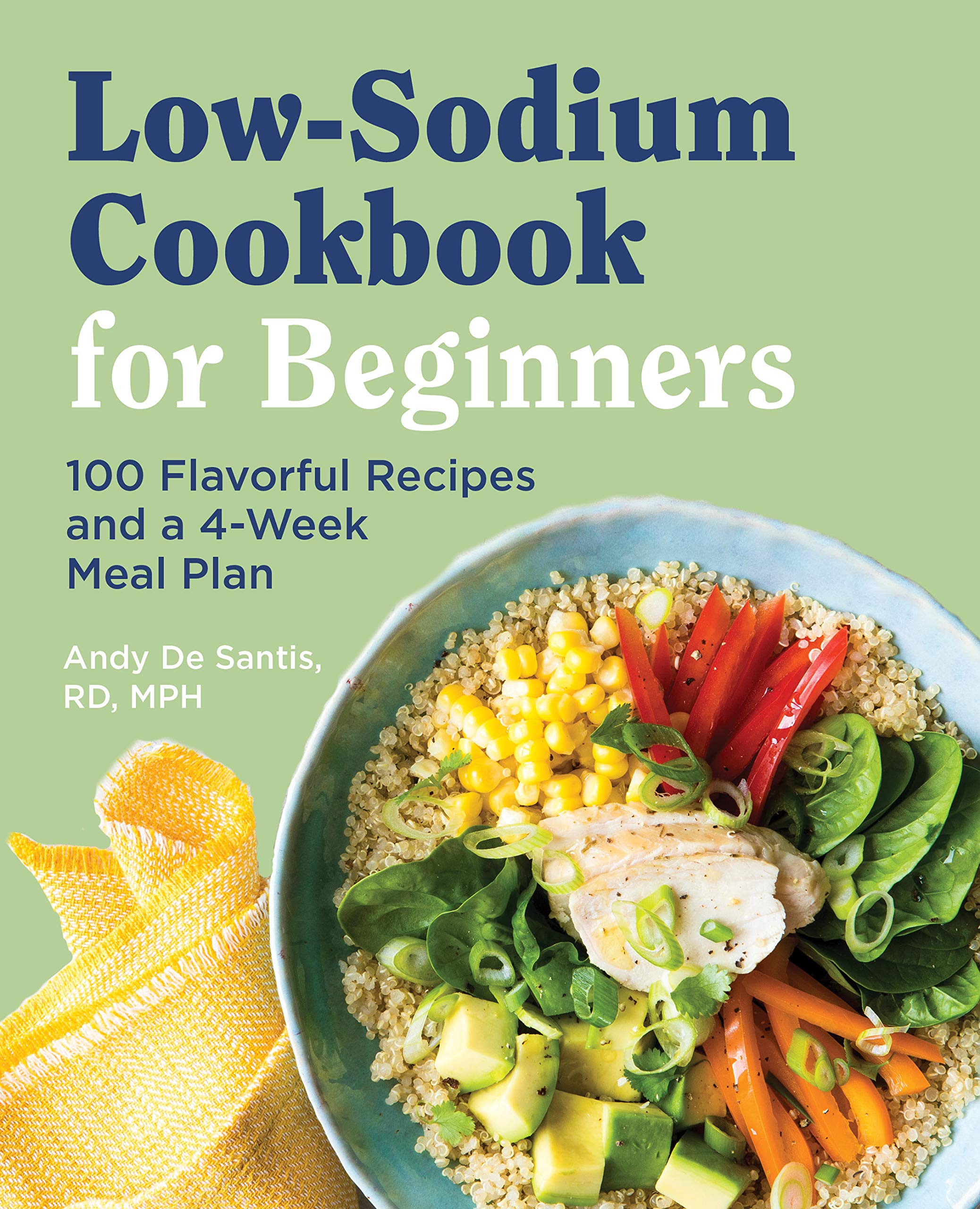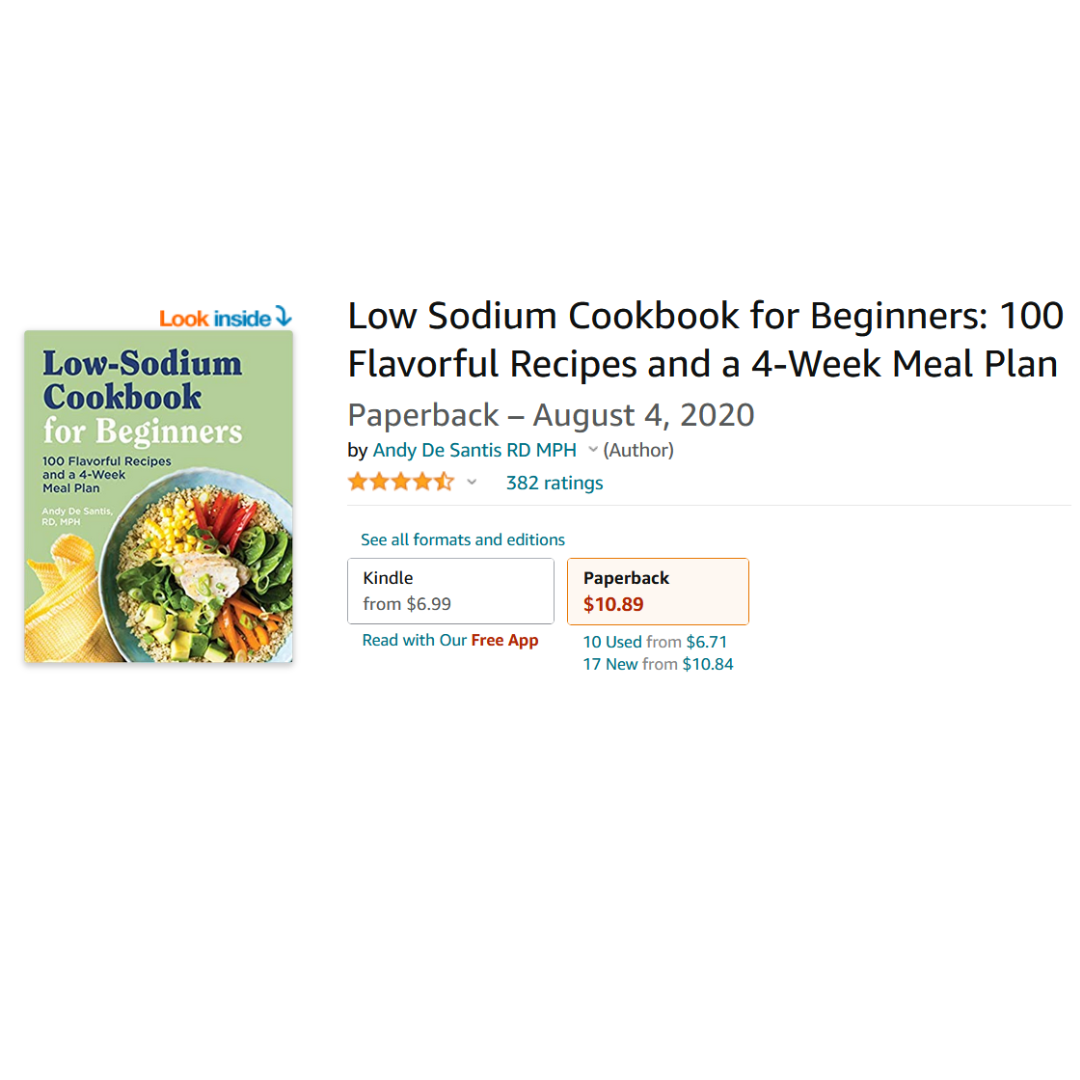In today’s article, I have the simple aim of identifying the biggest contributors of sodium to the “average” North American’s diet.
Why?
Well, excessive sodium intake is a major dietary driver of high blood pressure which in turn is the most common reason why Canadians get prescribed medication.
Enter my Low-Sodium Cookbook and today’s content.
The major motivation behind today’s article, and my latest book as a whole, is to help you understand which foods contribute most of your dietary sodium so that you can take the steps required to reduce your intake by navigating around these foods and using the delicious recipes from the book to create lower sodium versions of your favourite high sodium dishes.
Spoiler Alert: Much of the sodium we eat is kind of “hidden” in processed foods, frozen meals, take out and fast food, which all tend to have a ton of it whereas the table salt added to home cooked meals does not tend to account for that much of the average person’s intake.
While there are a number of demographic considerations to consider when it comes to sodium intake, I could not help but to be intrigued by the fact that men tend to consume up to 50% more sodium than women, which may be indicative of the fact that men consume these types of foods more often or in greater frequency.
Certainly something to consider for the guys reading this article!
With that said, let’s get to the good stuff.
The Top 10 Sources Of Dietary Sodium
The list provided below is in no particular order and sourced using data from both the CDC and Health Canada.
As you will see within each description, there are certain foods which contribute a high levels of sodium that I honestly don’t think are worthy of worry, whereas others inevitably demand more thought and attention.
Bread: Since bread is so commonly and frequently consumed, it tends to contribute a lot of sodium to our diets. We all love bread and we can make up for the extra sodium somewhere else, so I wouldn’t sweat this too much but you can always use the nutrition label to compare various bread products and choose one that has less per serving.
Things You Have With Bread: Condiments, processed deli meat and cheese all tend to be very high in sodium – this is a whole other topic to explore.
Processed Meat: In addition to being high in saturated fat and preservatives, and relatively low in protein, foods like bacon, hot dogs, sausages, ham and salami have incredibly high sodium content and probably need to play a smaller role in your diet.
Snack Foods: Think granola bars, muffins, chips, popcorn, pretzels and crackers. Your best defense here is to be mindful about the sodium content of these products and try to go for a variety that is lower then the rest by comparing sodium content on the label.
Soups: Whether canned from the grocery store or purchased out, soups are often very high in sodium. If you enjoy soup, looking for sodium reduced canned version or using the epic soup recipes from low sodium cookbook is the obvious way to go.
Pizza: Pizza tends to combine what are individually already very high sodium foods such as cheese, tomato sauce & processed meat ( ie pepperoni). The most obvious low sodium solution to this problem is using a specially crafted low sodium recipe, kinda like the ones you’d find in my book. For similar reasons, sandwiches also fall into this category.
Eggs: Eggs don’t have THAT much sodium, but once again they are so commonly consumed that they add up. I would not sweat this too much either, nor should you spend too much energy worrying about eggs and cholesterol.
Frozen Meals & Frozen Potato-based Products: Now this is the area where we can make up some ground on, relying less on these types of foods is a fundamental step to lowering sodium consumption. Obviously my book will help here!
Sauces, Salad Dressings & Condiments: From teriyaki sauce to ketchup and everything in between, these types of products tend to be high in sodium. Low sodium varieties are available for many of them, and some can even be made from home (once again, my book will help with that!).
Cheese: I’m not going to ask you to avoid or even to eat less cheese, just be aware of the fact that cheese ends up being a decent contributor and also often finds itself in foods that are already quite high in sodium.
Final Thoughts & A Call To Action
The goal of today’s article was simply to inform you of the foods that are most likely responsible for pushing your sodium intake beyond where it should be.
If you’ve read today’s post and have a clear vision of how to proceed, that’s awesome.
If, however, you look at the list above and have no clue how you are going to navigate the world without these foods – my new book will help.
My Low Sodium Cookbook was quite literally created for the singular purpose of allowing you easily prepare traditionally high sodium dishes in a way that actually doesn’t have that much sodium.
Of course it will also help you rely less on pre-packaged, frozen and restaurant foods – all of which are heavy hitters when it comes to your sodium intake.
Until next time,
Andy De Santis RD MPH





